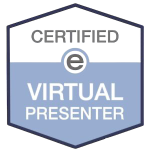Antonilacinai
Five steps for more motivation
Unless you feel you have too much of it already?
First a simple motivation formula:
𝗠 = 𝗚 – 𝗥
Motivation = Goals minus Resistance
If you have a goal that shines bright and clear, then motivation increases.
If you have internal or external resistance, then motivation decreases.
So what can you do to get your motivation up? Here are five good points:
𝗕𝗲 𝗰𝗹𝗲𝗮𝗿.
Unclear goals, unclear roles, and unclear responsibilities are motivational killers.
𝗦𝗵𝗼𝘄 𝘁𝗿𝘂𝘀𝘁.
The more autonomy, the greater the motivation.
𝗩𝗶𝘀𝘂𝗮𝗹𝗶𝘇𝗲 𝘁𝗼𝗴𝗲𝘁𝗵𝗲𝗿.
Paint a picture of how good it will be when it’s done.
𝗖𝗹𝗲𝗮𝗿 𝗼𝘂𝘁 𝗼𝗯𝘀𝘁𝗮𝗰𝗹𝗲𝘀.
If a department is a bottleneck, work on a solution.
𝗖𝗲𝗹𝗲𝗯𝗿𝗮𝘁𝗲 𝘀𝘂𝗰𝗰𝗲𝘀𝘀𝗲𝘀.
We all want to be validated and appreciated.
Motivation comes from the Latin word 𝘮𝘰𝘷𝘦𝘳𝘦; to move.
𝗣𝗲𝗼𝗽𝗹𝗲 𝘄𝗮𝗻𝘁 𝘁𝗼 𝗽𝗲𝗿𝗳𝗼𝗿𝗺, 𝗽𝗲𝗼𝗽𝗹𝗲 𝘄𝗮𝗻𝘁 𝘁𝗼 𝗺𝗼𝘃𝗲 𝘁𝗼𝘄𝗮𝗿𝗱𝘀 𝗮 𝗴𝗼𝗮𝗹.
𝗛𝗲𝗹𝗽 𝘁𝗵𝗲𝗺 𝗱𝗼 𝗶𝘁. 𝗙𝗲𝗲𝗹 𝘁𝗵𝗲 𝗷𝗼𝘆 𝘄𝗵𝗲𝗻 𝗶𝘁 𝗵𝗮𝗽𝗽𝗲𝗻𝘀.
Team Antoni Explains
Motivation is a powerful force that propels individuals towards their goals, pushing them to overcome challenges and achieve success.
Antoni Lacinai, in his insightful approach, provides a simple formula to understand motivation: 𝗠 = 𝗚 – 𝗥, where Motivation (𝗠) is equal to Goals (𝗚) minus Resistance (𝗥). This fundamental equation underscores the delicate balance between having clear objectives and minimizing internal or external resistance to foster motivation.
Be Clear: Uncertainty as a Motivational Killer
Clarity is the cornerstone of motivation. Lacinai emphasizes that unclear goals, ambiguous roles, and undefined responsibilities act as motivational killers. Imagine having a goal that shines brightly and clearly in your mind – the path becomes evident, and the motivation to pursue it intensifies. When objectives are poorly defined or shrouded in ambiguity, individuals may find it challenging to summon the enthusiasm needed to propel them forward.
Clear goals provide purpose and direction. They serve as beacons, guiding individuals through their journey. Whether in personal or professional realms, establishing well-defined goals ensures that motivation is not only present but also sustained. This clarity minimizes the likelihood of feeling lost or directionless, allowing individuals to channel their efforts more effectively.
Show Trust: Autonomy and Motivation
utonomy, or the freedom to act independently, plays a pivotal role in motivating individuals. Lacinai suggests that the more trust and autonomy people are given, the greater their motivation becomes. Trusting individuals to take ownership of their work not only acknowledges their competence but also instills a sense of responsibility, fostering intrinsic motivation.
Micromanagement and excessive control can stifle motivation. Conversely, a culture of trust empowers individuals, enabling them to make decisions and contribute to the overall success of a project or organization. When people feel trusted, they are more likely to invest their energy and creativity, resulting in increased motivation to excel in their endeavors.
Visualize Together: The Power of Mental Imagery
Painting a vivid picture of success can be a potent motivator. Lacinai suggests visualizing the positive outcome of achieving a goal, creating a mental image of how rewarding it will be. Visualization taps into the power of imagination, allowing individuals to emotionally connect with the benefits and satisfaction that await them at the culmination of their efforts.
This step involves more than just setting goals; it requires actively engaging with the vision of success. By vividly imagining the end result, individuals can tap into their emotional reservoirs, generating enthusiasm and determination. This emotional connection serves as a driving force, compelling individuals to persevere even when faced with obstacles.
Clear Out Obstacles: Overcoming Bottlenecks
Identifying and addressing obstacles is crucial for sustaining motivation. Lacinai advises working on solutions to clear bottlenecks that impede progress. Whether in a personal project or within a larger organizational context, obstacles can demotivate individuals by creating frustration and hindering the realization of goals.
Addressing obstacles involves a problem-solving mindset. If a department or process is acting as a bottleneck, it is essential to analyze the root causes and implement strategies to overcome these challenges. This proactive approach not only removes impediments but also demonstrates resilience and determination, contributing to an overall sense of accomplishment and increased motivation.
Celebrate Successes: Validation and Appreciation
Validation and appreciation are integral components of motivation. Lacinai emphasizes that we all desire to be validated and appreciated for our efforts. Recognizing and celebrating successes, whether big or small, creates a positive and supportive environment that fuels motivation.
Acknowledging achievements is more than a mere formality; it is a psychological reward that reinforces positive behavior. This recognition can come in various forms, such as verbal praise, written commendations, or tangible rewards. The key is to make individuals feel seen and valued, fostering a sense of pride and accomplishment that translates into sustained motivation.
Motivation as Movement: The Latin Essence
Lacinai aptly points out that motivation originates from the Latin word “movere,” meaning “to move.” This etymological connection underscores the dynamic nature of motivation – it is not a static state but a continuous process of movement towards a goal. To fully understand and harness motivation, one must embrace this inherent drive to move forward, to progress, and to achieve.
Related Post: Understanding Loud Quitting: The Destructive Impact of Employee Discontent
Conclusion
Lacinai’s five steps for more motivation provide a comprehensive framework for individuals and organizations seeking to enhance their drive toward. By fostering clarity, autonomy, visualization, obstacle clearance, and celebration of successes, one can create an environment where motivation thrives. This holistic approach recognizes motivation as a multifaceted phenomenon, acknowledging the interplay between clear goals, individual autonomy, positive visualization, proactive problem-solving, and a culture of appreciation.
Applying these principles can transform motivation from a fleeting sentiment to a sustained force that propels individuals and teams towards their aspirations.




